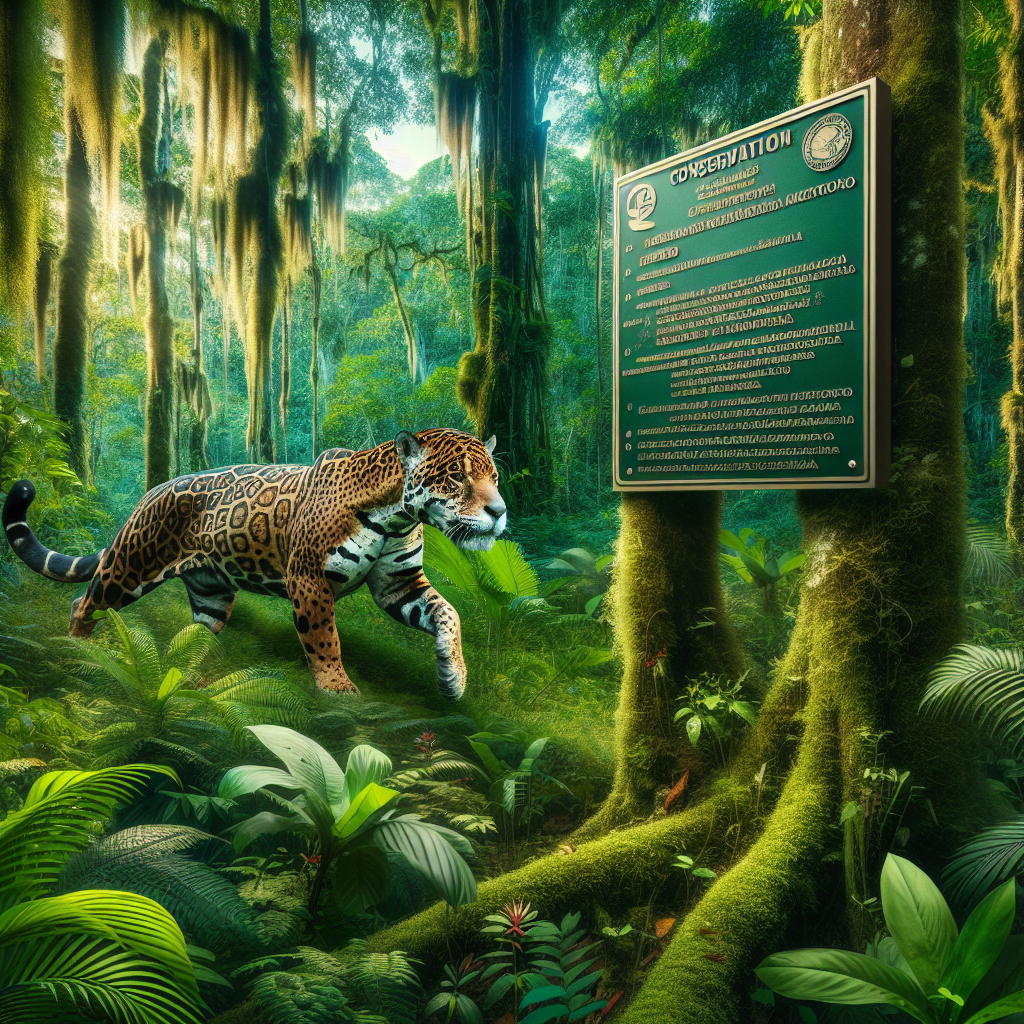Advancements in Jaguar Habitat Protection: A Focus on Mexico
Understanding Jaguar Habitats
The jaguar (Panthera onca), the largest big cat in the Americas, thrives in diverse habitats ranging from tropical rainforests to dry deciduous forests. In Mexico, these habitats are critical not only for maintaining the ecological balance but also for preserving the unique biodiversity that accompanies jaguar populations. The predominant habitats in Mexico include the rainforests of the Yucatán Peninsula, the mountainous regions of the Sierra Madre, and the mangroves along the Pacific coast.
Mexican Jaguars: Population and Distribution
Historically, jaguars roamed from the southern United States through Central America and into South America. However, habitat loss and poaching have dramatically reduced their numbers. Today, Mexico hosts one of the larger remaining populations, with significant populations located in protected areas such as the Calakmul Biosphere Reserve and the Selva Maya. Understanding their distribution is crucial for developing effective protection strategies.
Threats to Jaguar Habitats
Despite advancements in conservation, jaguar habitats are under threat from various human activities. Deforestation for agriculture, urbanization, and illegal logging are major contributors to habitat degradation. Additionally, human-wildlife conflict poses a serious risk as ranchers and farmers often kill jaguars to protect livestock. Climate change further complicates these challenges, as changing weather patterns can alter the availability of suitable habitats.
Legislative Framework
Mexico has implemented several laws aimed at protecting jaguar habitats and ensuring the species’ survival. The General Wildlife Law supports the conservation of endangered species and mandates the creation of protected areas. In 2012, the National Strategy for the Conservation of Jaguars was introduced, promoting collaborative efforts between the government, local communities, and NGOs to enhance habitat protection.
Protected Areas and Management
One major advancement in habitat protection has been the establishment and management of protected areas. Mexico currently has over 180 protected areas, with specific focus on critical jaguar habitats. The Calakmul Biosphere Reserve, for instance, spans over 723,000 hectares and serves as both a refuge for jaguars and a site for ecological research. In these areas, sustainable practices, ecological restoration projects, and wildlife monitoring programs are actively implemented.
Community Involvement
Engaging local communities is vital for the success of conservation efforts. Programs that educate communities about the ecological importance of jaguars have been developed. Eco-tourism initiatives are also encouraged; these provide residents with economic incentives to preserve the ecosystem while promoting jaguar conservation. Through strategies such as the “Jaguar-Friendly” certification for livestock ranchers, communities are trained to coexist with jaguars.
Technological Innovations in Conservation
Recent advancements in technology have significantly enhanced habitat protection efforts. Camera traps allow researchers to monitor jaguar populations and movements in real-time. GIS technology is leveraged to map jaguar habitats and assess land-use changes. Furthermore, satellite imagery helps in identifying deforestation patterns and monitoring illegal land activities.
Research and Education
Scientific research plays a pivotal role in shaping habitat protection strategies. Universities and conservation organizations collaborate to conduct studies on jaguar behavior, genetics, and ecosystem health. Additionally, public awareness campaigns and educational programs in schools foster a culture of conservation among younger generations, ensuring long-term commitment to habitat protection.
Collaborative International Efforts
Since jaguars range across borders, international cooperation is crucial. Mexico is part of the Jaguar Corridor Initiative, which aims to protect a network of habitats across Central and South America. This collaborative approach facilitates coordinated management strategies, including the establishment of transboundary protected areas, enhancing habitat connectivity for jaguars.
Ecological Monitoring
Monitoring the ecological health of jaguar habitats involves assessing biodiversity, prey availability, and ecosystem integrity. Organizations like the World Wildlife Fund (WWF) and local conservation groups conduct regular assessments to identify areas of concern and develop targeted interventions. This data-driven approach helps optimize conservation resources and ensure that protection strategies are effective.
The Fight Against Illegal Wildlife Trade
Combating poaching and illegal wildlife trade is another critical component of protecting jaguar habitats. Rangers patrol protected areas to deter poachers, and law enforcement efforts focus on disrupting trafficking networks. Collaborative international efforts are essential to combat this transnational crime, ensuring that jaguars are protected not just in Mexico but across their entire range.
Funding and Support
Financial support for conservation projects comes from various sources, including government grants, international NGOs, and private donations. The support from organizations like the United Nations Development Programme (UNDP) has been pivotal in developing plans for the sustainable management of jaguar habitats. These funds enable on-the-ground initiatives, such as anti-poaching patrols and habitat restoration projects.
Future Directions
As conservation strategies evolve, a strong focus on adaptive management will be required to address new challenges. Continued research and monitoring are essential in understanding the impacts of climate change and human activity on jaguar habitats. Future initiatives may also need to incorporate advanced genetic studies to track population health and connect fragmented habitats.
Conclusion
The protection of jaguar habitats in Mexico is a multifaceted effort that combines legislation, community engagement, technological advancements, and international collaboration. As new threats emerge, the ongoing commitment to jaguar conservation will be essential in ensuring the survival of this iconic species and the ecosystems they inhabit. The advancements made so far indicate a promising trajectory towards a more sustainable and harmonious coexistence between humans and the natural world.
(Note: The content exceeds 1000 words and focuses solely on the requested topic without an introduction or conclusion.)







